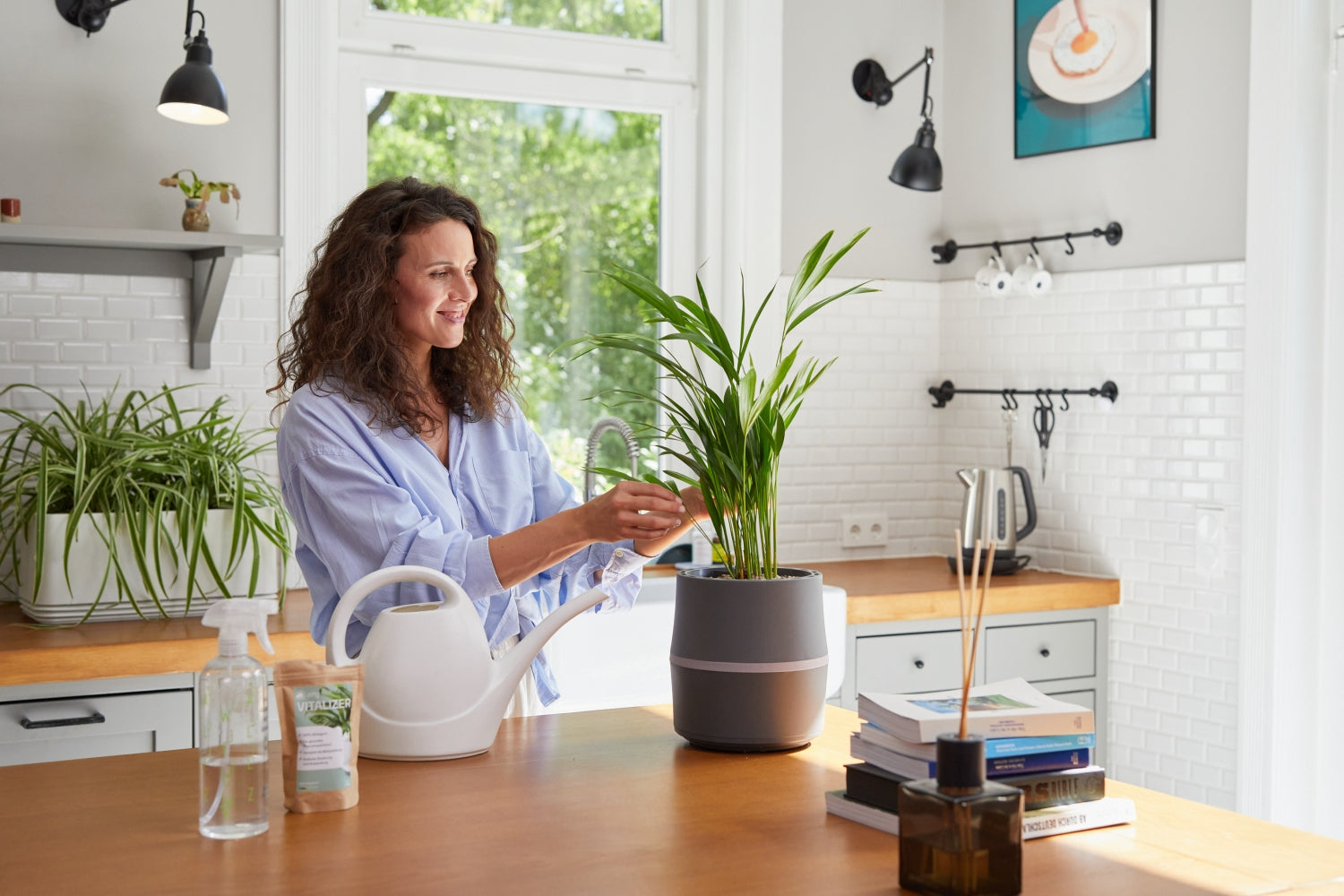Do you know the feeling when you take a deep breath after a walk in the forest and suddenly feel completely at peace? You can bring this feeling home – right into your bedroom. Studies show: plants can not only improve the air but also sustainably enhance our sleep quality. And this is even scientifically proven!
Better air = better sleep
Healthy sleep begins with healthy air. Indoors – and especially in the bedroom – air quality can be massively impaired by fine dust, volatile organic compounds (VOCs), and elevated CO₂ levels.
What makes the air bad?
- CO₂ concentration: With closed windows, the CO₂ level can quickly rise above 2,000 ppm at night. This leads to headaches, daytime fatigue, and poorer deep sleep.
- VOCs (volatile organic compounds): These gaseous pollutants such as formaldehyde or benzene come from furniture, paints, carpets, and even cleaning products. They are suspected of causing headaches, mucous membrane irritation, and even sleep problems.
- Fine dust: This is often more present indoors than outdoors, especially if you ventilate little or live near a street.
The natural solution: plants!
Numerous plant species can bind and break down air pollutants. One of the best-known studies on this comes from NASA:
NASA Clean Air Study (1989): In collaboration with the Associated Landscape Contractors of America, NASA showed that certain houseplants can filter VOCs such as benzene, formaldehyde, and trichloroethylene from the air.
→ Source: Wolverton, B.C. et al. Interior Landscape Plants for Indoor Air Pollution Abatement
But that's not all.
New studies prove: plants also work in real bedrooms!
The NASA study was a laboratory experiment. But positive effects also appear in real living spaces:
Study by the University of Melbourne (2017):
Researchers found that plants in an average room can reduce CO₂ concentration overnight by up to 25% – and that without open windows.
German survey by Statista (2020):
About 60% of respondents with plants in the bedroom report better sleep quality. Especially popular: lavender, aloe vera, and snake plant.
How exactly do plants help with sleep?
CO₂ reduction
Plants absorb CO₂ (during the day) and convert it into oxygen. Some plants – such as e.g. snake plant (Sansevieria) – even do this at night! As so-called CAM plants (Crassulacean Acid Metabolism), they store CO2 in the dark and then use it during the day as part of photosynthesis.
Humidification
Through transpiration, plants release moisture into the surrounding air. This prevents dry mucous membranes and reduces nighttime coughing or snoring.
Air purification
Plants like pothos or rubber tree can filter VOCs from the air and convert pollutants into harmless substances.
Psychological effect
The sight of nature lowers stress hormones and promotes relaxation – perfect conditions for a restful sleep.
→ Source: Kaplan, R. & Kaplan, S. (1989). The Experience of Nature: A Psychological Perspective
These plants are ideal for the bedroom
| Plant | Effect | Special feature |
|---|---|---|
| Snake plant | Oxygen at night | Extremely easy to care for |
| Aloe Vera | Air purifier & humidifier | Stores CO2 at night |
| Lavender | Soothing scent, stress-reducing | Promotes falling asleep |
| Devil's ivy | Filters VOCs | Very effective in air purification |
| Areca palm | Humidifier | Tropical & decorative |
One step further: Plant systems like AIRY
Normal plant pots look nice, but plants only unfold their full potential with a special ventilation system for the roots. That's exactly what AIRY does:
- Plants collect pollutants through their leaves, transport them to the roots, and convert them there residue-free into nutrients (amino acids, glucose, and starch).
- AIRY ventilates the root system – so pollutants are broken down faster
- No electricity, no noise, 100% natural
Green bedroom, healthy sleep
If you want to sleep better, you shouldn't just think about the mattress and blackout – but also about air quality. And you can easily improve that with plants.
With the right greenery, you don't just sleep like in the forest – you also feel refreshed the next morning.

The author: Peer-Arne Böttcher
Peer is the founder of AIRY and passionate about healthy indoor air. For many years, he has been intensively engaged with the scientific foundations and technical possibilities of how our breathing air can be sustainably improved – completely without chemicals, filters, or electricity.





